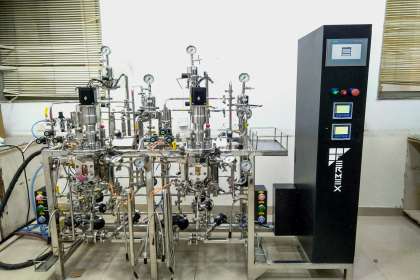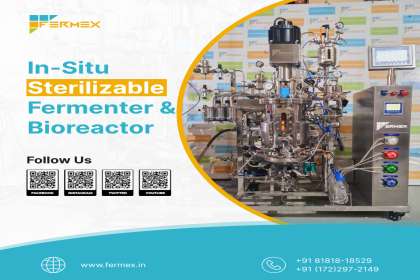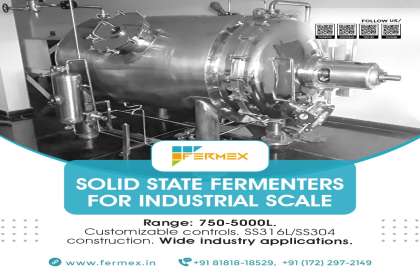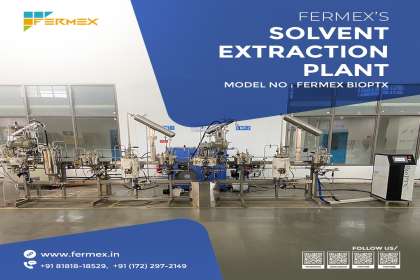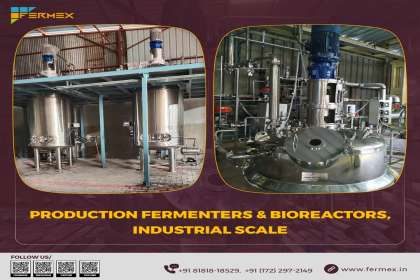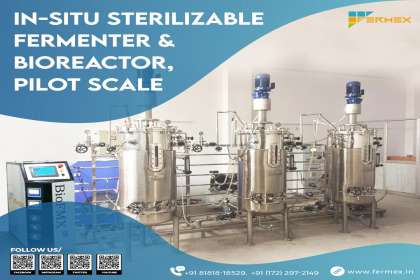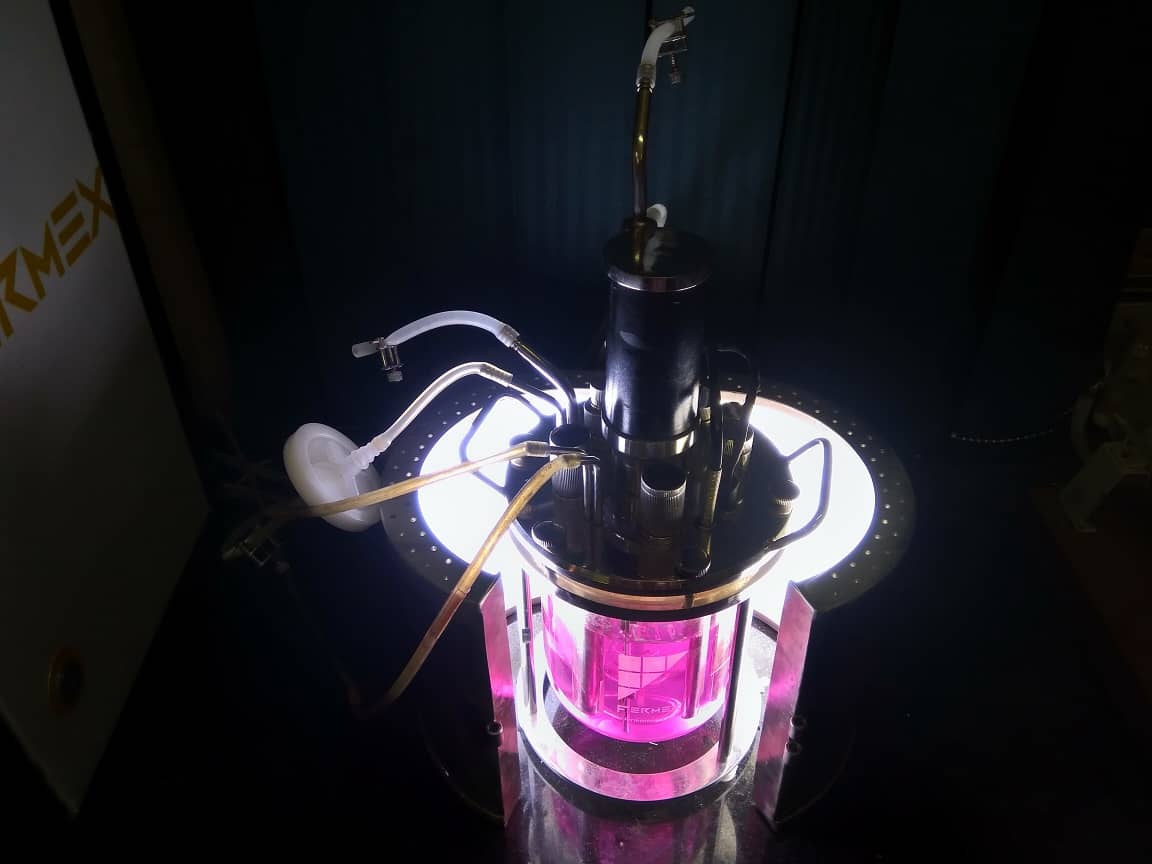
Introduction:
Fermentation is a biological process that has been harnessed by humans for thousands of years, primarily in the production of food and beverages. However, in the modern era, fermentation has found applications beyond food and drinks. Industries such as pharmaceuticals, biotechnology, and biofuels rely on controlled fermentation processes to produce a wide range of valuable products. To optimize these processes, choosing the right bioreactor system is crucial. In this article, we will explore the significance of fermentation and discuss various bioreactor types to help you select the ideal system for your fermentation application.
Fermentation is a metabolic process where microorganisms, such as bacteria, yeast, or fungi, convert organic compounds into other substances, typically in an anaerobic environment (without oxygen). This process yields energy for microorganisms and produces various by products, including alcohol, acids, and gases.
Historically, fermentation has been used for preserving and enhancing the flavor of food and beverages. Examples include the production of bread, cheese, wine, and beer.
Today, fermentation plays a vital role in various industries, as it can be employed to produce a wide array of valuable products, including:
Biopharmaceuticals: Fermentation is used to cultivate cells that produce therapeutic proteins, vaccines, and antibiotics.
Biofuels: The conversion of biomass into biofuels, such as ethanol and biodiesel, relies on fermentation processes.
Enzymes: Microorganisms are used to produce enzymes with various industrial applications, such as in the detergent and textile industries.
Food Additives: Fermentation produces food additives like citric acid, lactic acid, and vitamins.
Wastewater Treatment: Microbial fermentation is utilized to break down organic pollutants in wastewater.
Types of Bioreactors for Fermentation
Choosing the right bioreactor for your fermentation application is essential for achieving optimal yields, product quality, and process efficiency. Various bioreactor types are available, each with specific advantages and limitations. Here are some common types:
Stirred-Tank Bioreactors:
Stirred-tank bioreactors are the workhorses of fermentation processes. They consist of a cylindrical vessel equipped with an impeller or stirrer to mix the culture. These bioreactors offer excellent control over parameters such as temperature, pH, and oxygen levels. They are versatile and suitable for a wide range of applications, from pharmaceuticals to biofuels.
Choosing a Stirred-Tank Bioreactor for Fermentation:
Ideal for processes requiring high oxygen transfer rates.
Suitable for cultures with high cell densities.
Offers precise control of environmental parameters.
Airlift Bioreactors:
Airlift bioreactors use the rising gas bubbles to circulate the culture without the need for mechanical agitation. They are known for their energy efficiency and are commonly used for shear-sensitive cultures. Airlift bioreactors are employed in applications like biofuels and wastewater treatment.
Choosing an Airlift Bioreactor for Fermentation:
Energy-efficient and cost-effective for large-scale applications.
Suitable for cultures that are sensitive to mechanical agitation. Ideal for applications where foaming can be problematic.
Packed-Bed Bioreactors:
Packed-bed bioreactors contain a solid support matrix, such as beads or fibers, where microorganisms or enzymes are immobilized. These reactors are often used in bioconversion processes and the production of high-value compounds. They offer high cell density and enzyme stability.
Choosing a Packed-Bed Bioreactor for Fermentation:
Ideal for processes that require immobilized cells or enzymes.
Effective for continuous-flow applications.
Suitable for processes where high cell density is needed.
Membrane Bioreactors:
Membrane bioreactors combine biological treatment with membrane filtration. They are commonly used in wastewater treatment to achieve high-quality effluent. Membrane bioreactors provide excellent solids retention and produce clean water.
Choosing a Membrane Bioreactor for Fermentation:
Ideal for wastewater treatment applications.
Provides superior solids separation and effluent quality.
Effective in space-constrained environments.
Photo-Bioreactors:
Photo-bioreactors are used to cultivate photosynthetic microorganisms like algae and cyanobacteria. They rely on controlled light sources to support photosynthesis and are applied in the production of biofuels, food supplements, and wastewater treatment.
Choosing a Photo-Bioreactor for Fermentation:
Suitable for applications involving photosynthetic microorganisms.
Requires precise control of light intensity and wavelength.
Ideal for producing biomass and bioactive compounds.
Perfusion Bioreactors:
Perfusion bioreactors maintain a continuous flow of fresh media into the bioreactor while removing waste products. They are commonly used in cell culture applications, particularly for the production of monoclonal antibodies and high-density cell cultures.
Choosing a Perfusion Bioreactor for Fermentation:
Ideal for cell culture processes requiring high cell density and productivity.
Enables long-term culture and reduces the risk of contamination.
Requires sophisticated control systems.
Factors to Consider When Choosing a Bioreactor for Fermentation
Selecting the right bioreactor for your fermentation application involves considering several key factors:
- Microorganism or Cell Type: The nature of the microorganism or cell you are culturing is a crucial determinant. Some cells are sensitive to mechanical agitation or have specific oxygen requirements.
- Scale: Decide whether you need a benchtop, pilot-scale, or industrial-scale bioreactor based on your production or research requirements.
- Operating Conditions: Consider the environmental parameters required for your process, such as temperature, pH, and oxygen levels. Ensure the chosen bioreactor can provide precise control of these conditions.
- Cost and Resources: Evaluate the initial investment, maintenance costs, and availability of resources (e.g., media, spare parts) associated with the bioreactor.
- Automation and Control: Depending on your process complexity, consider the level of automation and control capabilities required for your bioreactor.
- Energy Efficiency: Evaluate the energy efficiency of the bioreactor, especially if you are concerned about operational costs and sustainability.
Conclusion:
In conclusion, the choice of bioreactor type is a critical decision that significantly impacts the success of your fermentation application. By understanding the different bioreactor types and carefully assessing your specific requirements, you can make an informed choice that optimizes your processes, enhances productivity, and ensures the success of your fermentation endeavours. Whether you are in the food and beverage industry, biotechnology, or pharmaceuticals, selecting the right bioreactor is a key step toward achieving your production goals and maintaining product quality.








